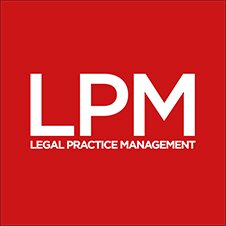What price exclusivity? by Janine Parker, Paragon LawSelect
This blog post was also featured as a column in the September 2016 issue of Legal Practice Management magazine. To read the issue in full, download LPM magazine.
It’s that wonderful time of year when the annual bombardment of brokers begins on your never-silent telephones. All of them can “carry out a full market exercise” for you that will, of course, save you money. But what’s the reality? The marketplace is still murky, and as a profession we don’t help ourselves by keeping it opaque. So let’s objectively consider many of the claims brokers make, attempt to clarify the true mechanics behind the market, and consider how to best utilise it for the benefit of your firm.
Since 2000, and the demise of the Solicitors Indemnity Fund, competition for solicitors professional indemnity has increased. This hasn’t always been generated through the number of insurers but the ever-increasing number of brokers who purport to be experts in this very niche area of insurance. This has increased pressure on insurers to lower prices (a good thing for clients, up to a certain point), but this pressure, combined with some extreme economic factors, has contributed to many insurers withdrawing from the market over the past decade.
Competition is good for consumers, and it encourages innovation to make sure that brokers and insurers can diferentiate themselves by developing their product ofering.
Some brokers organise ‘exclusive’ arrangements with insurers, often segmented by the number of partners within the firm – which is a very artificial way of dividing up the profession. But this is the marketplace we’re in today and it’s worth looking a little closer at these ‘exclusives’.
All the direct access points are listed in the Law Society buyer guide, and in practice it’s only a handful of brokers who actually hold the exclusive with direct access to the underwriters. It is essential to note that these exclusive agreements are not always ‘tied’ arrangements. The broker is not bound to place all their business with their one exclusive insurer, and it’s often the case that those brokers who hold the exclusive arrangement also enjoy strong relationships with the open market insurers.
To increase distribution, brokers who hold exclusive arrangements will ofer access to other brokers who wish to take advantage of the exclusive products available. These brokers don’t have their own facilities. There are many commercial reasons for opening an exclusive to other brokers, but it’s important to note that the extra broker in the chain will dilute your relationship with the placing broker and ultimately your insurer. Marketing materials can often be unclear, as access to exclusives is readily used – but in reality, these brokers will be approaching another broker to do this.
Often law firms will be unaware of the number of brokers in the chain and will unwittingly be paying additional brokerage and fees unnecessarily. Direct access allows for better communication between your firm and insurers which can often lead to more competitive pricing. Removing a broker from the chain can lead to the process of claims handling being more efcient and efective, as there are less obstacles in the chain of communication.
In summary, no one broker has direct access to every insurer and it is possible to approach more than one broker and not be at risk of flooding the market. If using more than one broker, be clear who you would like them to approach and be aware whether they have to go through another broker to ultimately reach the insurer.



